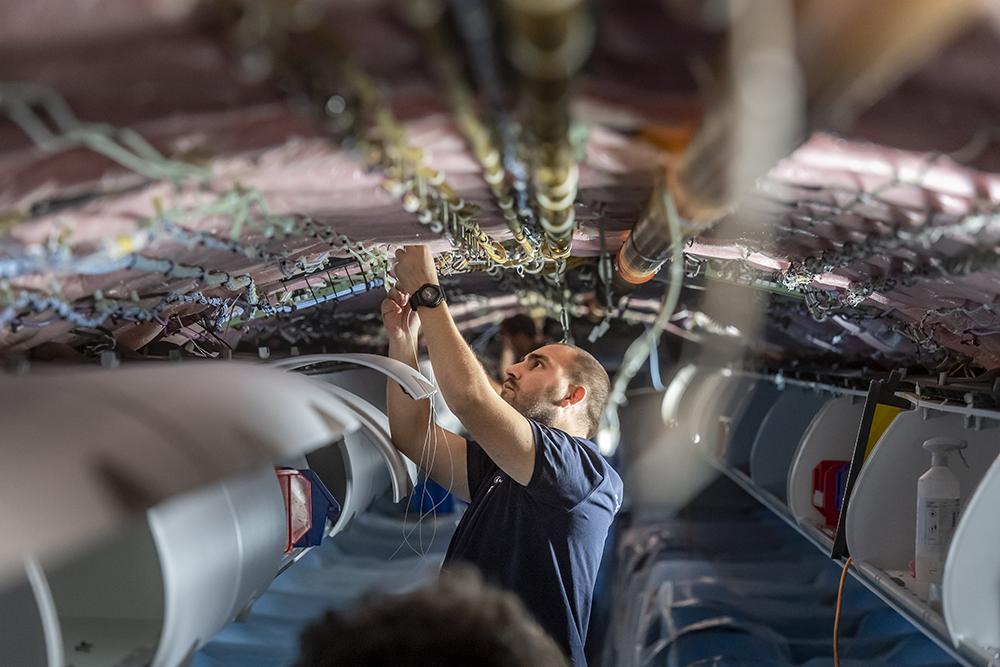Aftermarket Tackles Challenge Of Moving Modified Aircraft Between Regulatory Jurisdictions

Aviation’s pandemic-related turmoil, including massive airline bankruptcies, lease returns, aircraft redeployments and cargo conversions, has intensified an old challenge: how to get modifications that were approved by one regulator validated by another, where the modified aircraft will eventually fly. Currently, validation can take months or years, boosting costs or delaying revenue substantially.
The Independent Aircraft Modifier Alliance (IAMA) recently conducted a virtual think tank on best validation practices, challenges faced by MROs and industry efforts to improve the whole validation process.
IAMA Technical Affairs Director Ian Devine outlined some typical occasions for validation: a U.S.-registered aircraft is modified under a European Union Aviation Safety Agency (EASA) supplemental type certificate (STC); an aircraft modified under an FAA STC is transferred to Latin America; an aircraft is transferred to another jurisdiction for convenience; an aircraft is returned to a lessor that requires FAA validation of all modifications; or a U.S. OEM releases PMA parts for an EASA STC.
In each case, the validation challenge will “depend on the complexity of the mod, and arrangements between authorities,” Devine explained. He added that the modifying MRO should, where possible, develop an STC package that will satisfy both regulators.
Starting with requests for proposals, Devine says MROs should ask customers if validation by another regulator will be required. Upon award, the MRO should then apply for validation with the foreign regulator. The path to validation can thus be established early in the STC process, at the project kickoff meeting, and progress toward validation should be communicated continuously.
Eric Anderson, global director of engineering at Carlisle Interconnect Technologies, said validations can take from one month to years. He added that EASA’s outsourcing of some tasks has exacerbated delays during the pandemic.
Anderson recommends frequent communication, persistence and obtaining FAA support in dealing with foreign regulators such as EASA. He adds that it is best to have the same point of contact at a foreign regulator over all validation projects. For the future, Anderson would like to see standards set for turnaround times so there is some predictability of validation timing.
Robert van den Bosch, chief certification engineer at Lufthansa Technik (LHT), has been involved in cabin completions and large antenna validations with the FAA. He says these have taken anywhere from three weeks to two years.
LHT’s major validation challenges include getting everyone’s attention when different FAA offices and widely dispersed staff are involved. “You have to get everyone into one meeting room, or a virtual meeting,” said van den Bosch. “We used to travel to the U.S. for larger projects, but not anymore. Personal meetings are better than virtual meetings.”
LHT has also worked with the Civil Aviation Administration of China (CAAC) on validating non-electrical floor path markings and large antenna installations. CAAC validations now average eight months under a bilateral agreement, which van den Bosch says is quicker than prior to the agreement. In this case, van den Bosch says the major challenge has been getting attention of CAAC staff, which has limited human resources. He says language and cultural barriers also hamper LHT’s collaboration with the CAAC, recommending that MROs get the Chinese customer involved in validation.
Gary Weissel, managing officer for Tronos Aviation Consulting, raised another validation challenge: “Often, the destination of a modified aircraft is not known.” Weissel cites unexpected transfers to the Philippines, Indonesia, Latin America and the Bahamas.
Even the validation of a freight conversion from the U.S. to Ireland took 9-12 months during the Brexit transition. Steven Higgins, international certification manager for EASA, said a Technical Implementation Procedures (TIP) agreement between EASA and the UK should solve some of those problems.
Other improvements should be on the way. The FAA, EASA, Transport Canada and Brazil’s Agencia Nacional de Aviação Civil have formed a certification management team to speed things up. FAA and EASA aim to cut 2022 validation costs and time by 20%, compared with 2011. These two authorities also set up a validation improvement roadmap, with an updated status report due shortly.





